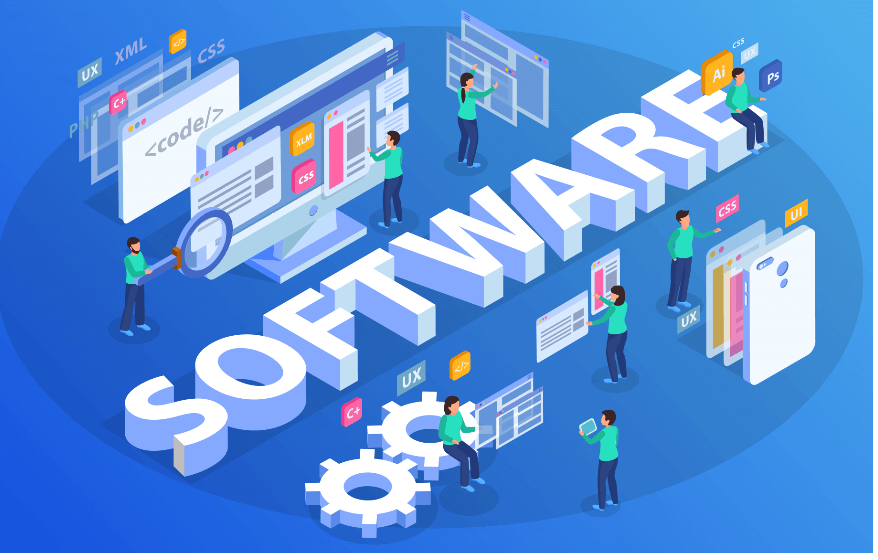https://digitalspedia.com/entertainment/sheppard-software-education-and-entertainment-combined/ Software is a collection of programs, data, and instructions that enable computers and other electronic devices to perform specific tasks or provide functionality. It is a vital component of modern technology, powering everything from operating systems and applications to embedded systems and cloud-based services. In this article, we will explore software in detail, discussing its types, components, development process, and its role in various aspects of our daily lives.
Types of Software
Software can be categorized into several types based on its purpose and functionality:
System Software: System software includes operating systems, device drivers, and utility programs that manage and control the hardware resources of a computer or electronic device. It provides a foundation for running applications and ensures smooth operation of the system.
Application Software: Application software consists of programs designed to perform specific tasks or provide specific functionality for end-users. This includes word processors, web browsers, photo editors, video players, and many other applications that cater to different needs and interests.
Embedded Software: Embedded software is specifically designed to run on embedded systems, which are specialized computer systems embedded within larger products or machinery. This type of software controls the functionality and behavior of the embedded system, such as in automotive systems, medical devices, or home appliances.
Enterprise Software: Enterprise software refers to applications and systems used by organizations to support their business operations. This can include customer relationship management (CRM) software, enterprise resource planning (ERP) systems, project management tools, and collaboration platforms.
Web and Mobile Apps: Web and mobile applications are software programs that run on web browsers or mobile devices, respectively. These apps offer a wide range of functionalities, such as social media, e-commerce, navigation, and productivity tools.
Components of Software
Software is composed of several components that work together to enable its functionality:
Code: Code refers to the instructions written in a programming language that define the behavior and functionality of the software. It is typically written by software developers using programming languages such as Java, C++, Python, or JavaScript.
Data: Data refers to the information processed and manipulated by the software. It can be store in various formats, such as databases, files, or memory, and is utilize by the software to perform tasks or provide services.
Interfaces: Interfaces define how users interact with the software. This includes graphical user interfaces (GUIs), command-line interfaces (CLIs), and application programming interfaces (APIs) that allow different software components to communicate and interact with each other.
Libraries and Frameworks: Libraries and frameworks are pre-written code modules that provide reusable functionalities and tools to simplify software development. Overall, they offer pre-built components, algorithms, and utilities that developers can leverage to speed up the development process.
Software Development Process
The software development process involves a series of steps and methodologies to create, test, and deploy software applications. The typical stages of the software development process include:
Requirements Gathering: In this stage, developers and stakeholders define and gather requirements for the software, identifying its purpose, functionality, and expected outcomes.
Design and Planning: During this phase, developers create a high-level design and architecture for the software. Overall, they define the system components, interfaces, data structures, and algorithms required to meet the specified requirements.
Coding and Implementation: In this stage, developers write the code according to the design specifications. Overall, they follow programming best practices, use appropriate programming languages, and leverage libraries or frameworks to implement the desired functionality.
Testing and Quality Assurance: Testing is a crucial phase to identify and fix any defects or issues in the software. Overall, this includes unit testing, integration testing, and system testing to ensure that the software behaves as expected and meets the defined requirements.
Deployment and Maintenance: Once the software has been thoroughly teste and validate, it is deploy to the target environment or make available to end-users. Overall, ongoing maintenance and support are provided to address bugs, security vulnerabilities, and to add new features or updates as required.
Role of Software in Daily Life
Software plays an integral role in various aspects of our daily lives:
Communication: Software powers communication tools such as email clients, messaging apps, and video conferencing platforms, enabling people to connect and communicate across distances.
Entertainment: Software is responsible for the development of video games, streaming platforms, music apps, and digital media players that provide entertainment and leisure activities.
Productivity and Business: Software tools like word processors, spreadsheet applications, project management software, and collaboration platforms improve productivity and efficiency in various professional settings.
E-commerce and Online Services: Software enables online shopping platforms, payment gateways, banking apps, and various online services that facilitate transactions and provide convenience to users.
Education and Learning: Software applications and e-learning platforms offer interactive learning experiences, online courses, virtual classrooms, and educational resources to support learning at all levels.
Automation and IoT: Software powers automation systems, smart home devices, and Internet of Things (IoT) solutions, enabling control and monitoring of various interconnected devices and systems.
Conclusion
Software is a critical component of modern technology, enabling computers and electronic devices to perform specific tasks and provide desired functionality. With various types of software, including system software, application software, embedded software, and web/mobile apps, software offers a wide range of functionalities in our daily lives. Overall, from the development process to the components of software, understanding its role and importance provides insight into the complexity and impact of software in today’s digital world.
You may also like
-
Guide to Ticketmaster Phone Number and Customer Service Support
-
Engineers Explain How to Make Space for Your Vocals in a Mix Without Losing Warmth
-
How to Transfer Tickets on TickPick to Apple Wallet: A Complete Guide
-
Bollyflix: A One-Stop Destination for New Movies and Web Series
-
Audio Entertainment Informally: Exploring Casual Ways to Enjoy Sound and Music

